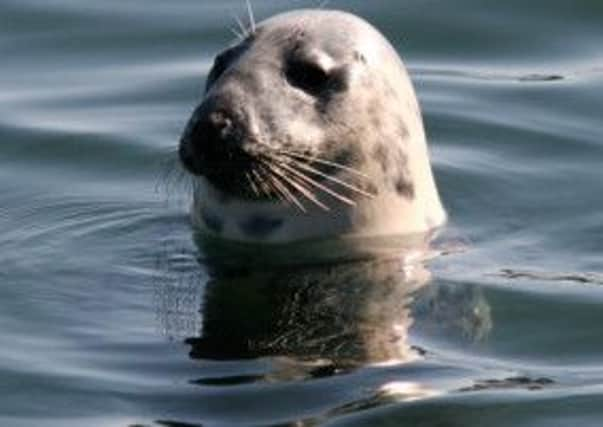Harass a seal, face prison


The law, which still need to be approved by Holyrood, will protect nearly 200 ‘haul-out’ sites on Scottish coasts where seals come ashore to rest, moult and rear their young.
The measure is expected to protect at least half of Scotland’s grey and harbour seals by making it an offence to harass them in places where they are most vulnerable.
Advertisement
Hide AdAdvertisement
Hide AdThe 194 land-based sites come on top of an existing network of 15 seal conservation areas and 33 proposed marine protected areas due to be set out later this summer.
They vary widely and can include rocky islets or shorelines, sandy beaches or sandbanks and occasionally grassy areas on some isolated islands.
The law, part of the Marine (Scotland) Act 2010, does not define what constitutes intentionally or recklessly harassing a seal.
But people separating pups from their mothers, attempting to touch or feed the animals or causing them to “stampede” into the sea could face charges.
Other activities that could prove threatening include “buzzing” seals in a low-flying aircraft or steering a jetski, speedboat or kayak too close to a haul-out site.
It’s hoped the rules will protect seals from harassment that could prove dangerous, particularly for colonies of mothers and young pups.
Scotland’s environment secretary Richard Lochhead said: “Seals are one of Scotland’s most iconic species and that is why we have introduced a raft of new measures to better protect them.
“Haul-out sites are key to the success of both grey and common seals and this list represents an important step in their conservation.
Advertisement
Hide AdAdvertisement
Hide Ad“Over the last four years Marine Scotland has worked closely with the Natural Environment Research Council and the Sea Mammal Research Unit to identify the listed sites, which are the most crucial for seals in Scottish waters.
“Those engaging in the intentional or reckless harassment of seals in these areas will be committing an offence and if caught will be punished appropriately.”
The protection comes after clashes between marksmen and marine conservationists forced a major salmon producer to call off plans to cull seals at an Aberdeenshire harbour in April.
The following month campaigners gathered more than 6,00 signatures in a petition calling for the Scottish Government to “stop issuing licences permitting salmon farming, salmon netting and salmon angling interests to shoot and kill seals in Scottish waters”.
Animal welfare campaigners and environmentalists have welcomed the new laws.
“We hope that this will lead to all those who share the environment with marine wildlife, from dog walkers to anglers, fish farmers and salmon netsmen, recognising that seals at rest must be left alone,” said Libby Anderson, policy director at animal protection charity OneKind.
Alex Kinninmonth, of the Scottish Wildlife Trust charity, said: “Seals should be free from harassment wherever they are but the designation of these haul-out sites is certainly a step in the right direction.
“Along with other conservation measures, this will aid the protection and recovery of these iconic animals.”
Advertisement
Hide AdAdvertisement
Hide AdSarah Dolman, deputy convener of the marine task force for Scottish Environment Link, added: “This is a welcome announcement, especially to help reverse declines in harbour seal populations.
“Designation of these haul out sites, along with robust guidance, will help decision-makers to ensure protection of seals and is an important piece of the jigsaw that is the effective management of Scottish seas.”
The locations were chosen based on studies of seal habits carried out by the Sea Mammal Research Unit.
They include 149 haul-out sites used by one or both seal species and a further 45 grey seal sites that are used specifically during the breeding season, from September to December.